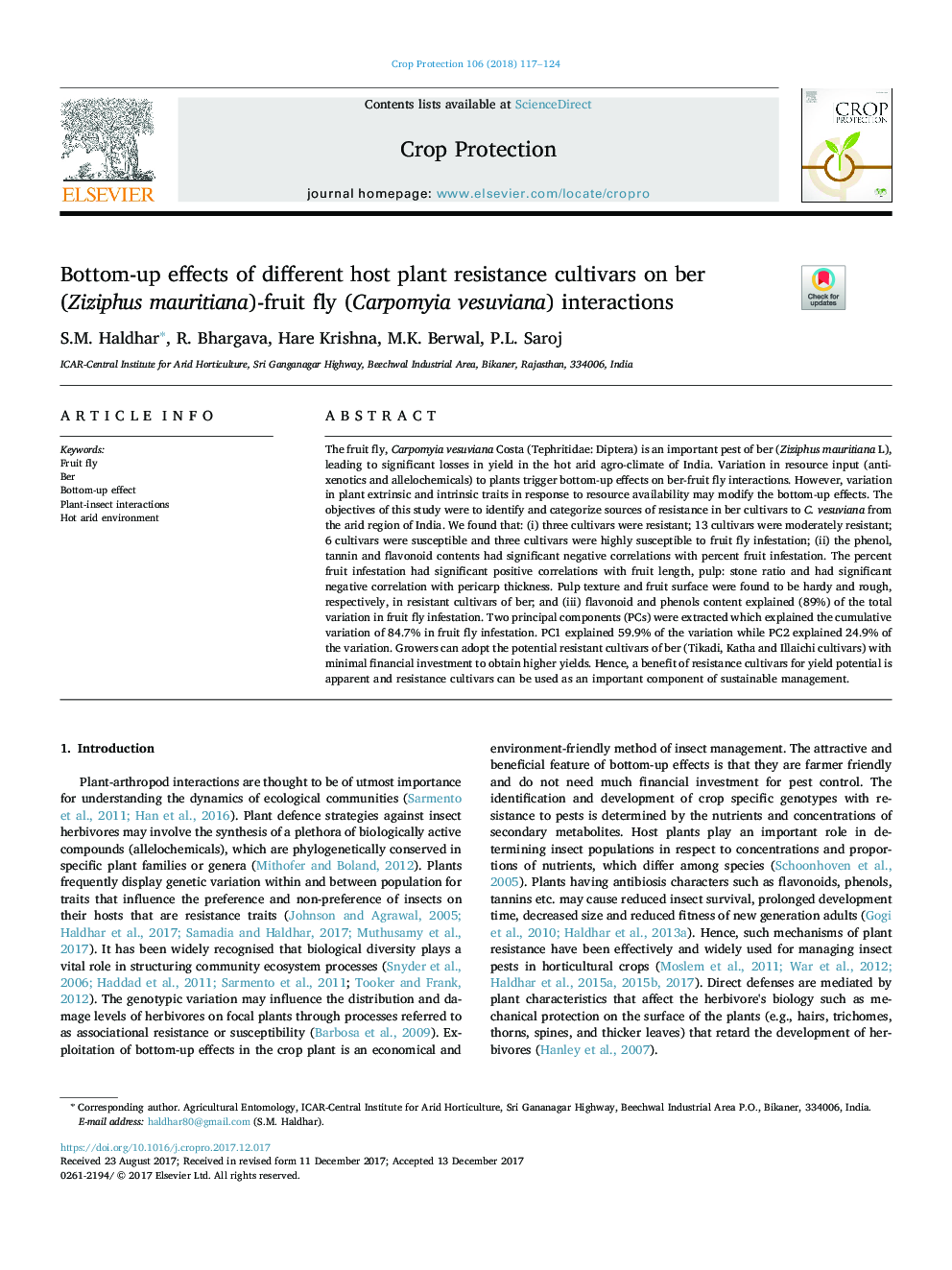| Article ID | Journal | Published Year | Pages | File Type |
|---|---|---|---|---|
| 8878251 | Crop Protection | 2018 | 8 Pages |
Abstract
The fruit fly, Carpomyia vesuviana Costa (Tephritidae: Diptera) is an important pest of ber (Ziziphus mauritiana L), leading to significant losses in yield in the hot arid agro-climate of India. Variation in resource input (antixenotics and allelochemicals) to plants trigger bottom-up effects on ber-fruit fly interactions. However, variation in plant extrinsic and intrinsic traits in response to resource availability may modify the bottom-up effects. The objectives of this study were to identify and categorize sources of resistance in ber cultivars to C. vesuviana from the arid region of India. We found that: (i) three cultivars were resistant; 13 cultivars were moderately resistant; 6 cultivars were susceptible and three cultivars were highly susceptible to fruit fly infestation; (ii) the phenol, tannin and flavonoid contents had significant negative correlations with percent fruit infestation. The percent fruit infestation had significant positive correlations with fruit length, pulp: stone ratio and had significant negative correlation with pericarp thickness. Pulp texture and fruit surface were found to be hardy and rough, respectively, in resistant cultivars of ber; and (iii) flavonoid and phenols content explained (89%) of the total variation in fruit fly infestation. Two principal components (PCs) were extracted which explained the cumulative variation of 84.7% in fruit fly infestation. PC1 explained 59.9% of the variation while PC2 explained 24.9% of the variation. Growers can adopt the potential resistant cultivars of ber (Tikadi, Katha and Illaichi cultivars) with minimal financial investment to obtain higher yields. Hence, a benefit of resistance cultivars for yield potential is apparent and resistance cultivars can be used as an important component of sustainable management.
Related Topics
Life Sciences
Agricultural and Biological Sciences
Agronomy and Crop Science
Authors
S.M. Haldhar, R. Bhargava, Hare Krishna, M.K. Berwal, P.L. Saroj,
